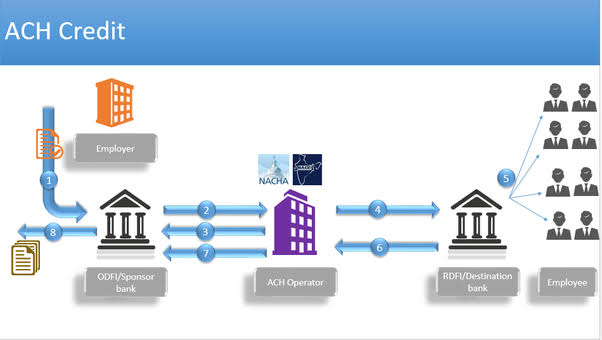ADVANTAGES AND DISADVANTAGES OF BANKING SYSTEM - BANKING TERMS FOR EXAMS
The banking system is critical for running the economy smoothly. Without a suitable banking system, it might be difficult to maintain, and conduct trade among individuals and commercial institutions. Let's discuss some of the advantages.
Advantages of Banking System
1. Economies of Large Scale Operations:
- Under the branch banking system, the bank with a number of branches possesses huge financial resources and enjoys the benefits of large-scale operations,
- Highly trained and experienced staff is appointed which increases the efficiency of management,
- Division of labour is introduced in the banking operations which ensures greater economy in the working of the bank. Right persons are appointed at the right place and specialisation increases,
- Funds are made available liberally and at cheaper rates,
- The foreign exchange business is done economically,
- Large financial resources and wider geographical coverage increases public confidence in the banking system.
2. Spreading of Risk:
- Another advantage of the branch banking system is the lesser risk and greater capacity to meet risks,
- Since there are geographical spreading and diversification of risks, the possibility of the failure of the bank is remote,
- The losses incurred by some branches may be offset by the profits earned by other branches,
- Large resources of branch banks increase their ability to face any crisis.
3. Economy in Cash Reserves:
- Under the branch banking system, a particular branch can operate without keeping large amounts of idle reserves. In time of the need, resources can be transferred from one branch to another.
4. Diversification on Deposits and Assets:
There is greater diversification of both deposits and assets under the branch banking system because of wider geographical coverage,
- Deposits are received from the areas where savings are in plenty,
- Loans are extended in those areas where funds are scarce and interest rates are high. The choice of securities and investments is larger in this system which increases the. safety and liquidity of funds.
5. Cheap Remittance Facilities:
- Since bank branches are spread over the whole country, it is easier and cheaper to transfer funds from one place to another. Inter-branch indebtedness is more easily adjusted than inter-bank indebtedness.
6. Uniform Interest Rates:
- Under the branch banking system, mobility of capital increases, which in turn, brings about equality in interest rates. Funds are transferred from areas with excessive demand for money to areas with deficit demand for money. As a result, the uniform rate of interest prevails in the whole area; it is prevented from rising in the excessive demand area and from falling in the deficit demand area.
7. Proper Use of Capital:
- There is proper use of capital under the branch banking system. If a branch has excess reserves, but no opportunities for investment, it can transfer the resources to other branches which can make the most profitable use of these resources.
8. Better Facilities to Customers:
- The customers get better and greater facilities under the branch banking system. It is because of the small number of customers per branch and the increased efficiency achieved through large scale operations.
9. Banking Facilities in Backward Areas:
- Under the branch banking system, the banking facilities are not restricted to big cities. They can be extended to small towns and rural as well as underdeveloped areas,. Thus, this system helps in the development of backward regions of the country.
10. Effective Control:
- Under the branch banking system, The Central bank than have more efficient control over the banks because it has to deal only with few big banks and nor with each individual branch. This ensures better implementation of monetary policy.
Disadvantages and limitations of the banking system
1. The problem of Management:
- Under the branch banking system a number of difficulties as regards management, supervision and control arise:
- since the management of the bank gets concentrated at the head office, the managers can afford to be lax and indulgent in their duties and are often involved in serious irregularities while using the funds.
- Since the branch manager has to seek permission from the head office on each and every matter, this results in unnecessary delay and red-tapism in the banking business.
2. Lack of Initiative:
- Branch managers generally lack initiative on all important matters; they cannot take independent decisions and have to wait for. The clearance signal from the head office.
3. Monopolistic Tendencies:
- Branch banking encourages monopolistic tendencies in the banking system. A few big banks dominate and control the whole banking system of the country through their branches. This can lead to the concentration of resources into a few hands.
4. Regional Imbalances:
- Under the branch banking system, the financial resources collected in the smaller and backward regions are transferred to the bigger industrial centres. This encourages regional imbalances in the country.
5. Adverse Linkage Effect:
- Under the branch banking system, the losses and weaknesses of some branches also have their effect on other branches of the bank.
6. Inefficient Branches:
- In this system, the weak and unprofitable branches continue to operate under the protection cover of the large and more profitable branches.
7. Other Defects:
- Preferential treatment is given to the branches near the head office,
- Higher interest rates are charged in the developed area to compensate for the lower rates charged in the backward areas,
- There are concentration and unhealthy competition among the branches of different banks in big cities,
- Many difficulties are faced when a bank opens branches. In foreign countries.



Post Graduate Diploma in Sales and Relationship Banking, Banking courses
ReplyDeleteTimesPro Post Graduate Diploma in Sales and Relationship Banking. PGDSRB is 45 day intensive training with 3 month paid internship with ICICI Bank. 1000+ job openings